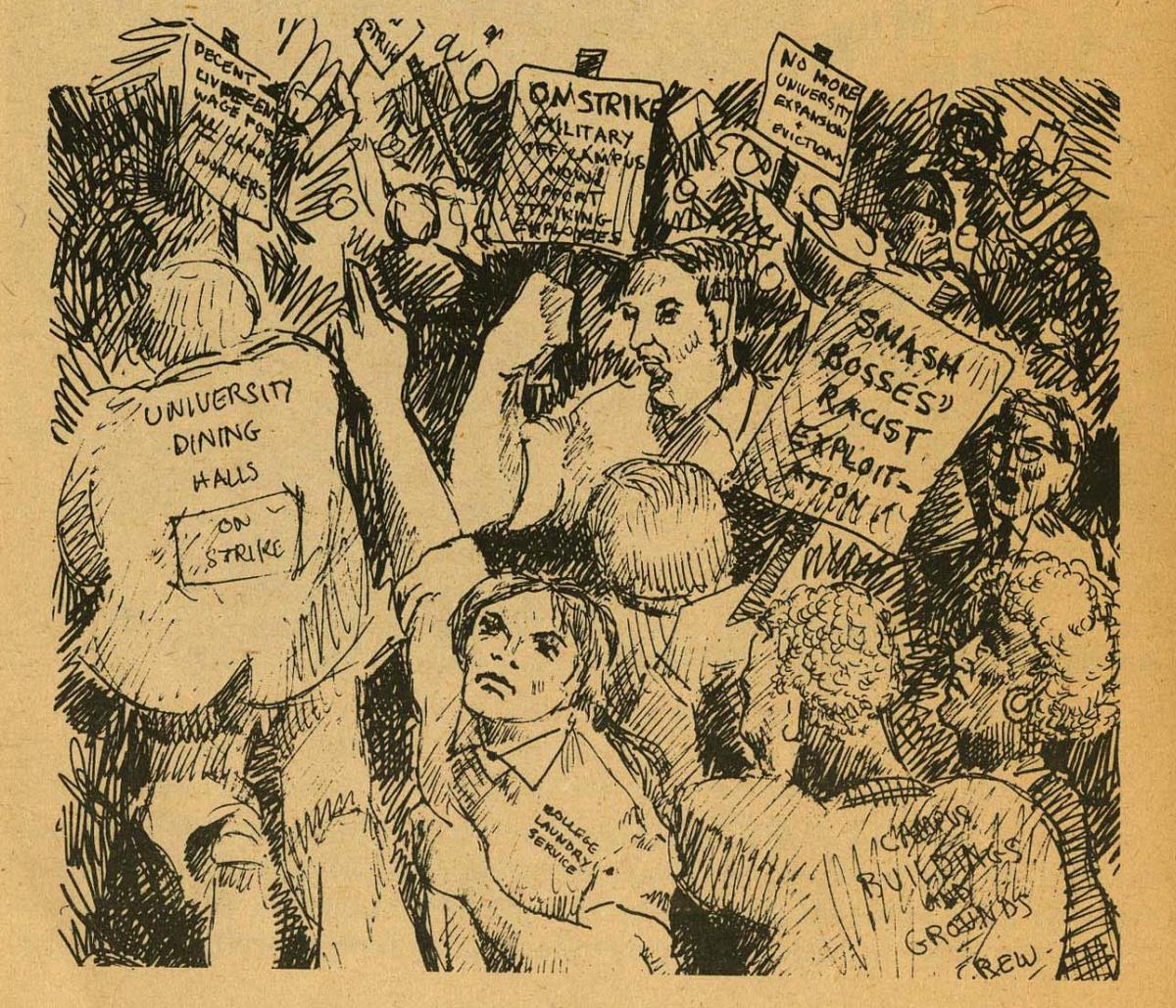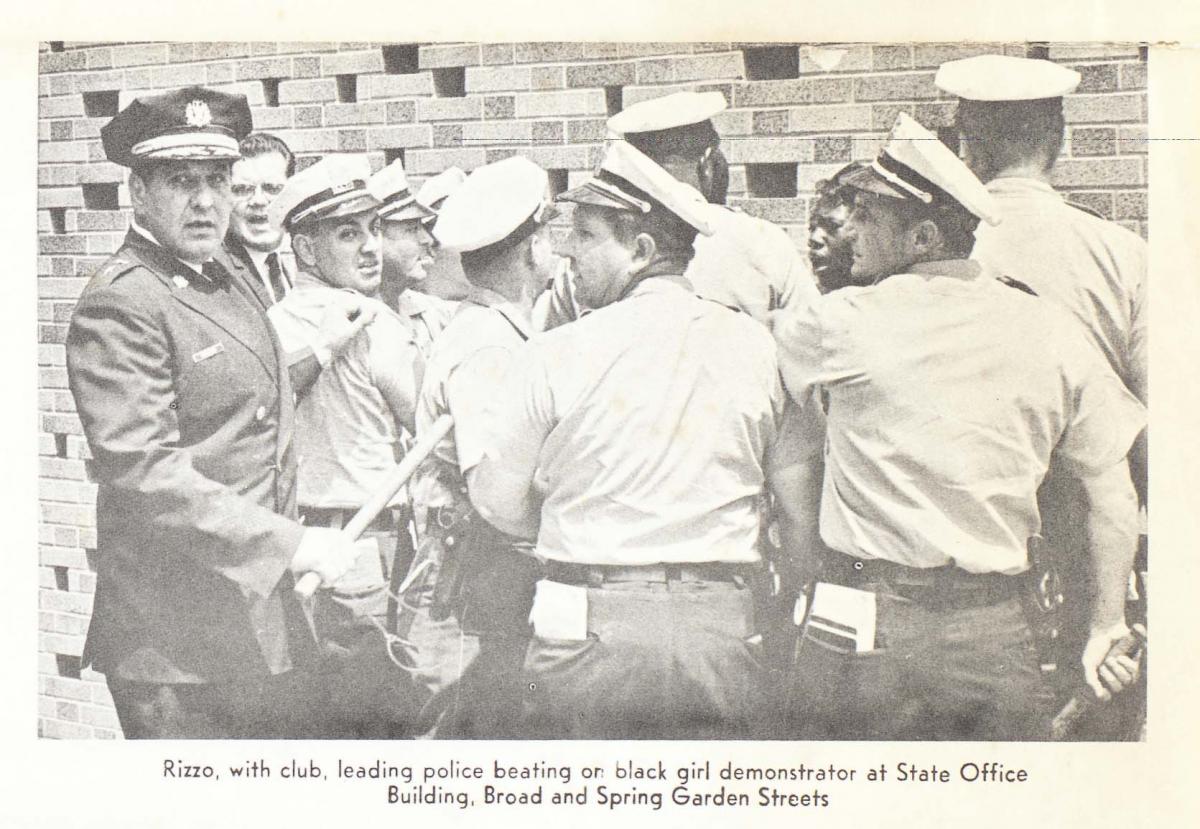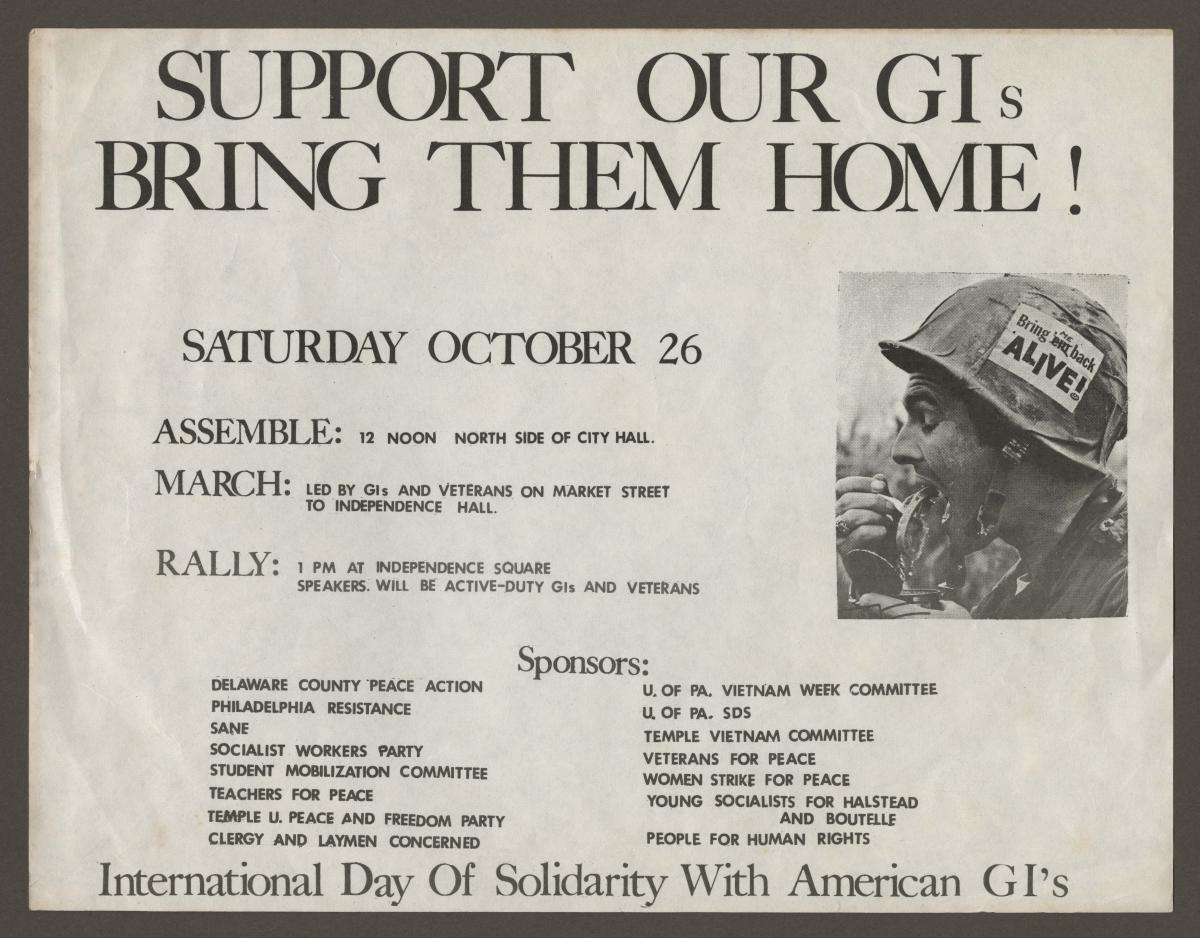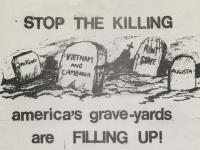By Amy Cohen
Each issue of Pennsylvania Legacies features one Teachers’ Turn column, which provides tips for using the issue's four main articles in the classroom. This Teachers' Turn column was published in the fall 2018 issue of Pennsylvania Legacies (vol. 18, no 2): Protest in 1960s Pennsylvania.
My older daughter was born in 1997 and graduated from high school in 2016. I would have found it odd if she told me that she had signed up for an elective history course about the 1990s. As a high school senior in 1982, however, I jumped at the chance to take a course about the decade in which I had been born.
Why did the 1960s seem compelling, significant, and worthy of inquiry so soon after the close of the decade? The answer to that question lies within the pages of this edition of Legacies. The Sixties were a watershed in American history: societal norms were upended and civil rights were expanded; major protests, political assassinations, and devastating riots occurred. Furthermore, as Timothy Lombardo writes in his article about Frank Rizzo, “The long aftershocks of the Sixties era have yet to subside.”
In addition to being an objectively important era, studying the 1960s also appealed to my high-school-age self because young people were so central to the action of the decade. As we move into what seems to be a new era of youth activism, today’s students will find resonance with their own lives and times as they learn about some of the milestone events that took place 50 years ago.

Illustration of campus protest from Fight Racism! (Boston, circa 1970), a pamphlet published by Students for a Democratic Society (SDS).
Campus Unrest in the 1960s: The Penn State Experience
As students read the article, ask them to underline or list reasons that Penn State did not become a site of significant student demonstrations during an era characterized by campus unrest. After reading (and perhaps sharing some additional information about the Columbia University student uprising), have students fill in a Venn diagram comparing Penn State to Columbia University. This will underscore how geographical isolation, a largely working-class state population, a non-elite student body, dependency on military funding, and a relatively small number of students of color created an atmosphere that was not conducive to student revolt.
Discussion Questions:
- In the article, Kenneth J. Heineman gives substantial evidence to back up his claim that “Penn State stocked the national arsenal.” Do you think it is appropriate for a large portion of a university’s budget to be funded by the US military? Why or why not? What are advantages and disadvantages of receiving financial support for defense-related research and programming?
- Heineman asserts that “the federal government nurtured a class divide that literally meant the difference between life and death.” Do you think it was fair for college students to be able to defer being drafted during the Vietnam War era? If students at elite universities were less likely to serve in the military, why might these same schools have become the site of large antiwar demonstrations? Which system is preferable—a draft as existed during the Vietnam War era or our current all-volunteer military?

Baton-wielding police officers, including Frank Rizzo, surround a young woman demonstrating to desegregate Girard College in July 1965. Detail from “Fact Sheet” published during Rizzo’s 1971 mayoral campaign. Thelma McDaniel Collection.
Civil Rights and the Rise of Frank Rizzo in 1960s Philadelphia
Introduce the reading by having students consider the words “law” and “order.” What is the definition of these terms? What are possible associations with each of these words? As students read the article, instruct them to trace the use of the phrase “law and order” in political discourse since the 1960s.
Discussion Questions:
- How has the phrase “law and order” been used to elicit political support over the past fifty years? “Law and order” is coded language meant to appeal to certain segments of American society—what might be an apt phrase to state clearly what proponents of “law and order” have in mind when using this term?
- The author connects the societal divisions that were established in the 1960s to current controversies about police brutality, athlete activism, and the populism of Donald Trump. What are other echoes of the rifts of the 1960s that are apparent today? Are there political leaders, other than President Trump, using language and tactics similar to those of Mayor Frank Rizzo?
Additional Sources:
To learn more about some of the events described in the article, there are several excellent resources available online.
Civil Rights in Pennsylvania
Available on the Historical Society of Pennsylvania website, this primary source-based unit includes information about Frank Rizzo’s role in disrupting the 1967 student walkout and about the Black Power movement in Philadelphia.
Civil Rights in a Northern City: Philadelphia
This website developed by Temple University Libraries has background essays, time-lines, and abundant primary sources about the Columbia Avenue riots and the desegregation of Girard College.
History Making Productions
The three-part series, Cecil’s People, tells the story of the Freedom Fighters, the young activists whose protests helped lead to the desegregation of Girard College.
The Fight: 1965–1978 focuses on Frank Rizzo’s controversial career as police commissioner and mayor. This 25-minute film is part of the 14-part Philadelphia: The Great Experiment series.
Documentary films and lesson plans can be found on the site.

“Sexism and Racism Are Twin Evils of Society” poster, undated. National Organization for Women, Philadelphia Chapter Records.
Contesting Miss America: The Boardwalk Protests of 1968
To help students understand the historical context of the article, you may want to share with them some images of idealized womanhood from the 1960s. You can find many examples by doing a Google image search for “women in advertising 1960s.” Ask students to determine messages about women’s societal role based on the images. Have them compare the vintage advertisements depicting women to images they see today.
Discussion Questions:
- Intersectionality is defined as the interconnected nature of social categorizations such as race, class, and gender as they apply to a given individual or group, regarded as creating overlapping and interdependent systems of discrimination or disadvantage. In what ways might both the Miss America Pageant and the protests against the pageant illustrate the concept of intersectionality?
- The Miss American Pageant currently is controlled by an all-female leadership team, has eliminated the bathing suit contest, and is promoted as a scholarship contest for talented young women. Do you think that this kind of pageant can sustain audience interest? Would you consider entering a pageant and/or encouraging a friend or family member to do so?

“Support Our G.I.s: Bring Them Home!” Flyer for a Philadelphia march in solidarity with American G.I.s, October 26, 1968. Thelma McDaniel Collection.
Must We Clip the Wings of Eagles? Commemorating Operation RAW
Before reading the article, ask students to list as many forms of protest as they can think of. Then, find out how many students included art or theater on their lists. Indicate that they will be reading about one painter’s vision of protest as a creative endeavor.
Discussion Questions:
- Operation RAW was designed to use creative means to make political points. What were some of the artistic and dramatic facets of the protest and what messages were these elements intended to convey?
- Other than the March for Our Lives movement and the Standing Rock protests mentioned in the article, what are other recent examples of creative protest? How might the arts be utilized to support a cause or an issue of importance to you?
Amy Cohen is the Director of Education for History Making Productions.
For more ideas on teaching this topic in the classroom, check out HSP’s unit and lesson plans.
This article was published in the fall 2018 issue of Pennsylvania Legacies (vol. 18, no 2): Protest in 1960s Pennsylvania. Learn more and subscribe.

